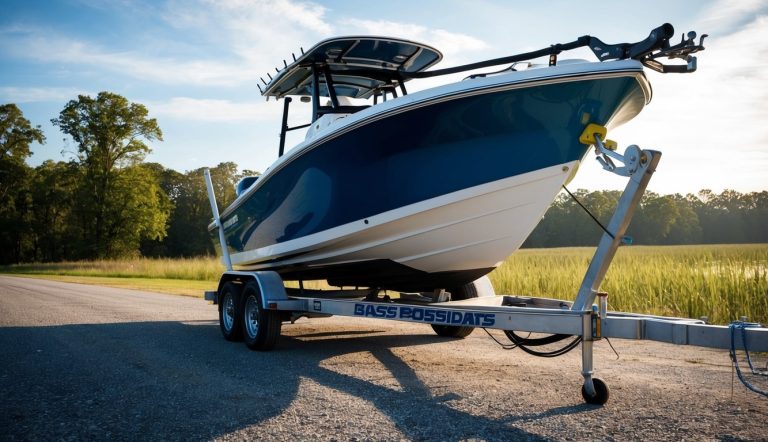Shipping a bass boat requires careful planning to protect your investment during transit. Many boat owners rush the process and make costly errors that could damage their vessels or lead to transport delays. Taking time to prepare your boat correctly and choosing the right shipping company can save you thousands in potential repairs and headaches.
When preparing to ship your boat, it’s important to understand the common pitfalls that many bass boat owners face. From failing to provide necessary documents to selecting an inappropriate transport vehicle, these mistakes can turn what should be a straightforward process into a stressful experience. Knowing what to avoid helps ensure your prized bass boat arrives at its destination safely and ready for your next fishing adventure.
1. Choosing the Cheapest Quote
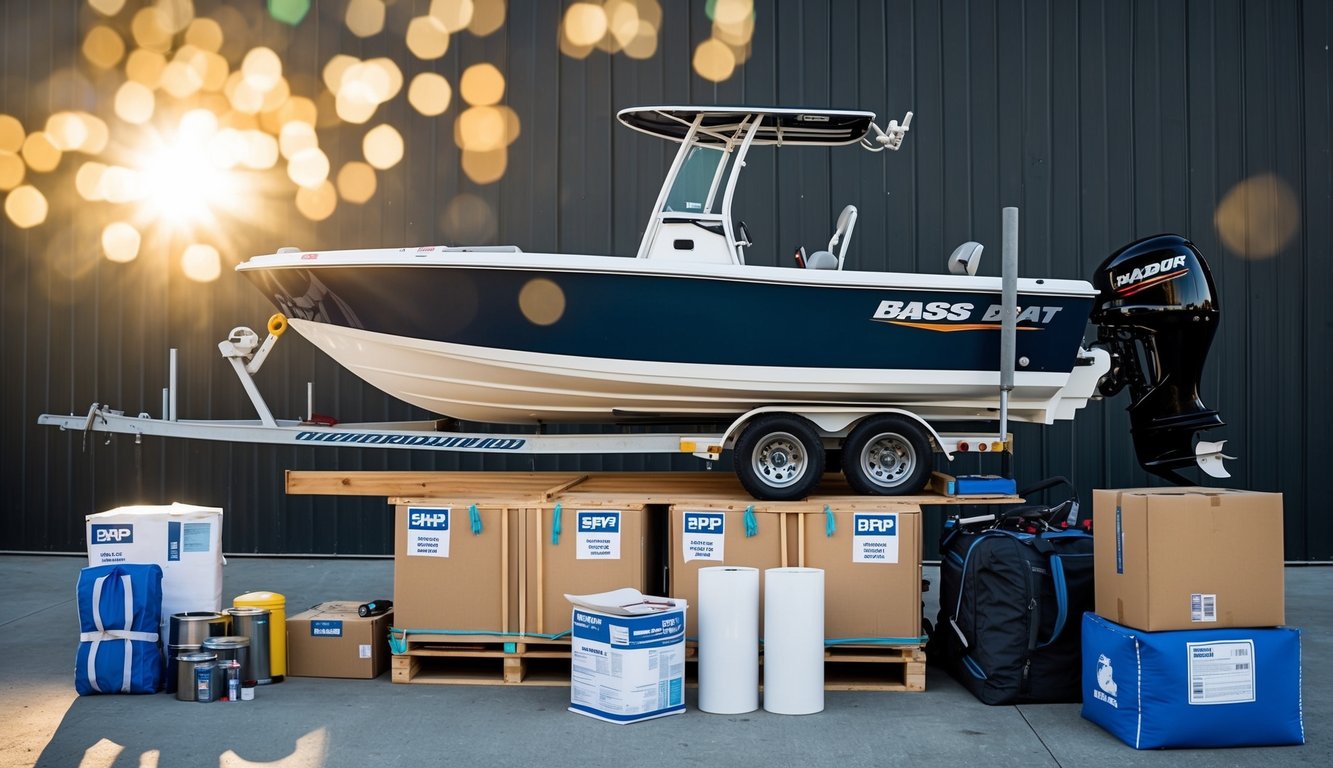
- When shipping your bass boat, it’s tempting to go with the lowest price you find. However, going for the lowest quote is one of the biggest mistakes you can make.
- Extremely low prices often indicate a lack of proper insurance, equipment, or experience. These companies might cut corners on safety measures that protect your valuable bass boat during transit.
- You should always get multiple quotes to compare prices. This helps you understand the average cost for shipping your specific boat type and distance.
- Be wary of quotes that seem too good to be true. They usually are, and might lead to hidden fees later or subpar service that could damage your boat.
- Instead of focusing solely on price, look for transporters with good reputations and proper licensing. Choosing inexperienced transporters can lead to costly mistakes during the shipping process.
- Ask detailed questions about what each quote includes. Does it cover insurance? What about loading and unloading? Understanding exactly what you’re paying for helps you make a better decision.
- Remember that protecting your investment is worth paying a reasonable price for quality service.
2. Skipping Insurance Coverage
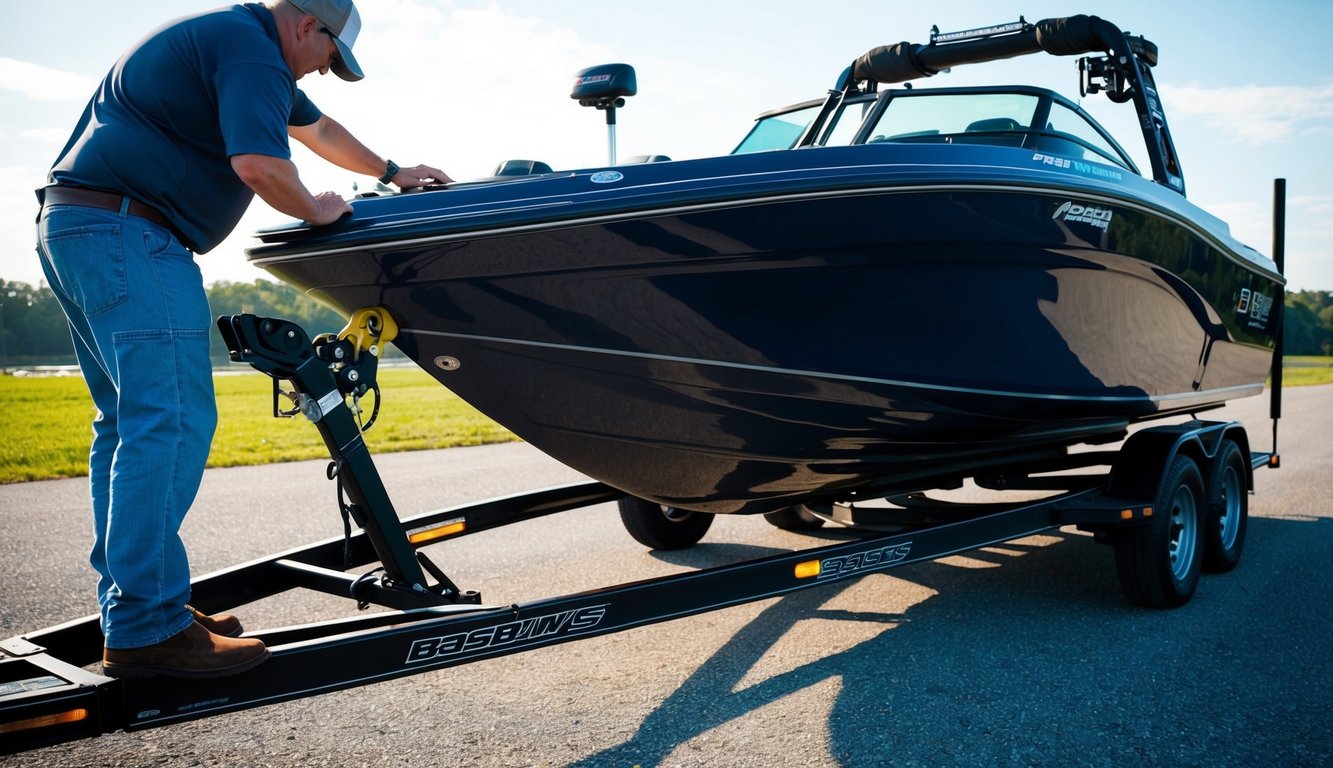
- One of the biggest mistakes boat owners make is failing to get proper insurance when shipping their bass boat. Regular boat insurance might not cover transportation damage, leaving you vulnerable to expensive repairs.
- Many boat owners assume their current policy covers shipping, but this often isn’t the case. Always check your policy details before transport and ask specific questions about coverage during transit.
- Insurance during shipping isn’t just a good idea—it’s essential protection for your investment. A quality bass boat costs thousands of dollars, and ignoring insurance coverage can lead to financial disaster if something goes wrong.
- Some boat owners discovered they weren’t properly covered during tournaments or when on “pro staff” arrangements. These insurance coverage gaps often surface only after damage occurs, when it’s too late.
- Ask your transport company about their insurance options. Many offer additional coverage specifically designed for boat shipping that fills gaps in your regular policy.
- Remember to document your boat’s condition before shipping with detailed photos. This evidence helps tremendously if you need to file an insurance claim later.
3. Not Securing Loose Items
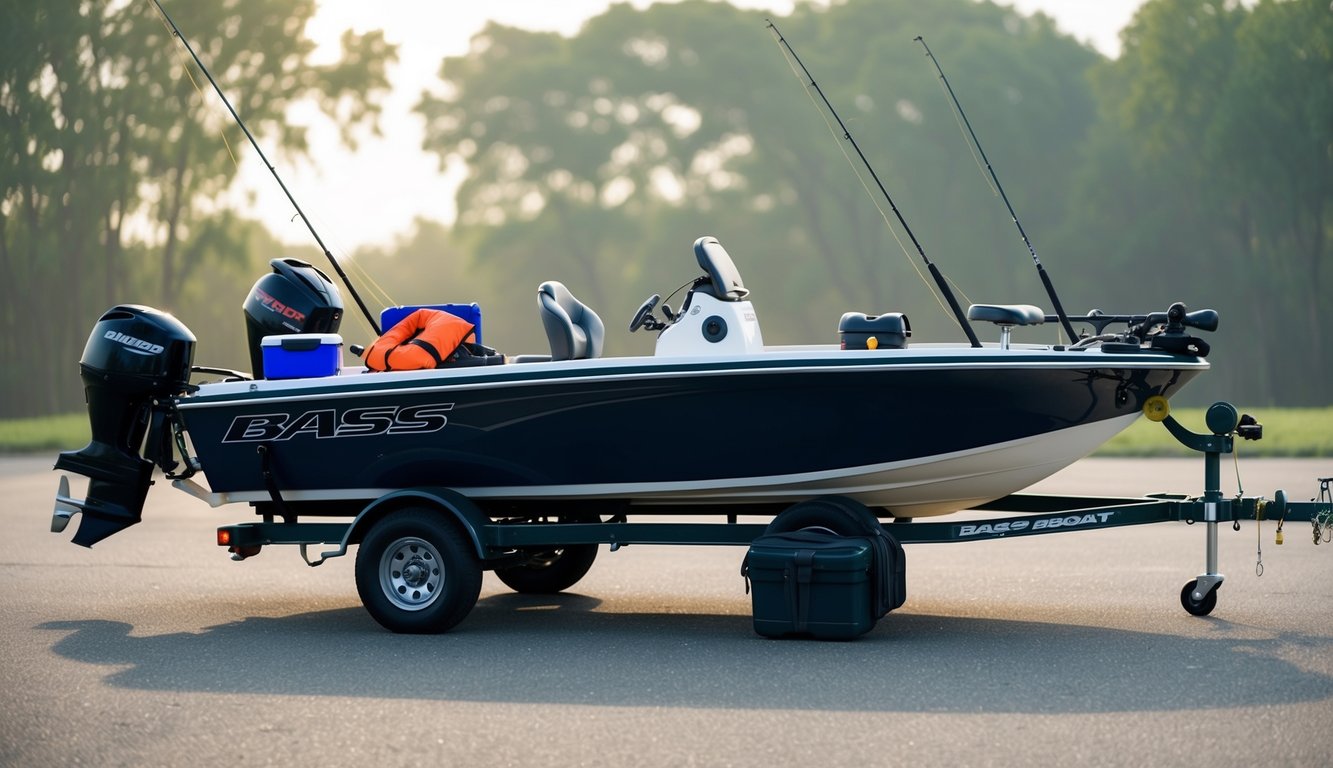
- Loose items on your bass boat can cause damage during shipping if not properly secured. Items like fishing rods, tackle boxes, and electronics can shift and break during transit. These movements can also damage your boat’s interior.
- Always remove all portable equipment before shipping your boat. This includes fishing gear, life jackets, and personal items. Secure anything that might move during transportation to prevent damage.
- For items that cannot be removed, use proper tie-downs or protective padding. Use moving blankets or towels as soft padding between hard objects and your boat’s surfaces. This helps prevent scratches and dents from vibrations during transport.
- Check compartments and storage areas thoroughly. Even small items can become projectiles during shipping. Empty all storage areas or ensure contents are tightly secured.
- Fill any gaps with packing materials like bubble wrap or packing peanuts. This prevents items from shifting during transportation. Remember that what seems secure in your driveway may come loose on a highway.
- Consider taking photos of how you’ve secured everything. This documentation can be helpful if any disputes arise regarding damage during shipping.
4. Ignoring Weather Conditions
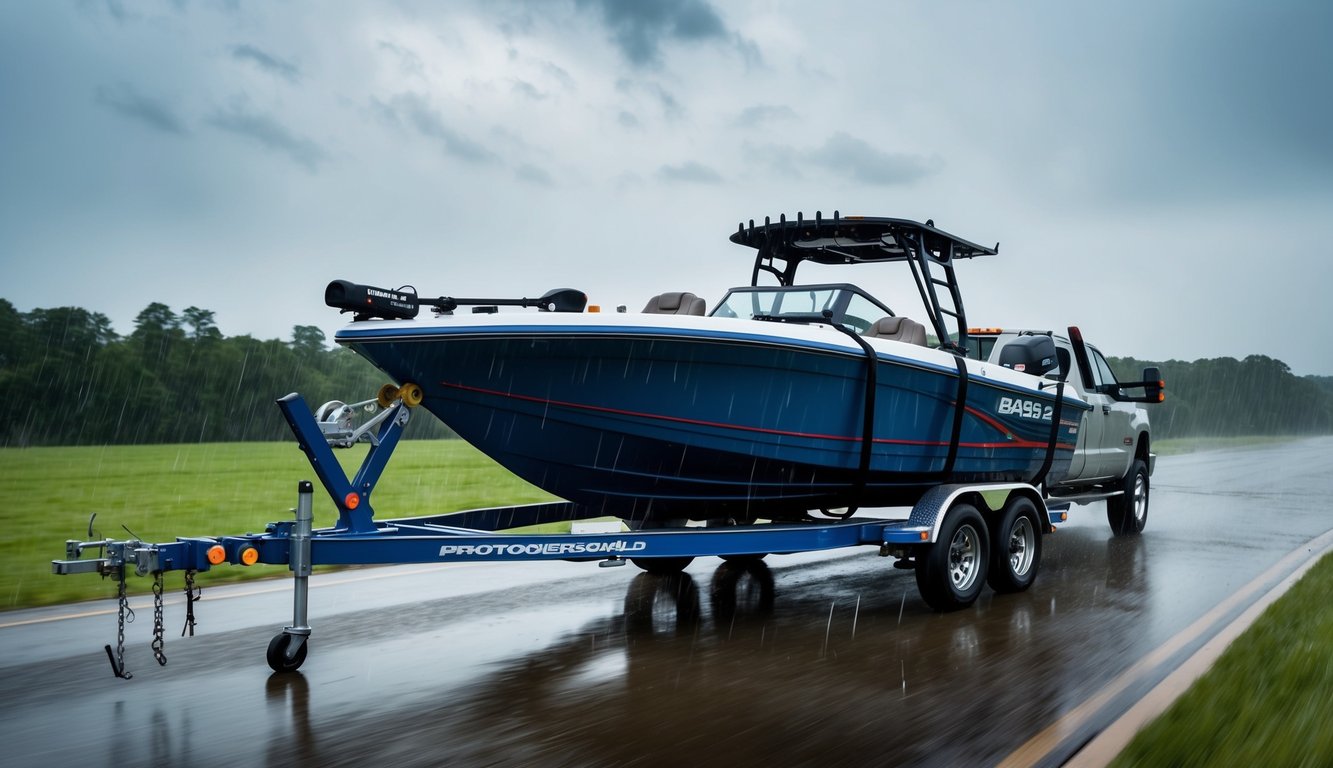
- Weather plays a crucial role when shipping your bass boat. Many boat owners overlook this factor, leading to potential damage during transport.
- Rain, snow, and extreme temperatures can affect both your boat and the shipping process. Failure to check weather conditions can lead to unexpected issues and delays.
- Strong winds are particularly hazardous during boat transport. They can create dangerous driving conditions for transporters and put extra strain on securing straps and coverings.
- You should always monitor the forecast before your scheduled shipping date. This allows you to communicate with your transport company about possible weather concerns.
- Stormy weather requires extra precautions. Make sure to secure any loose parts that could be affected by turbulent conditions during transport.
- Seasonal considerations matter too. Shipping a boat across different seasons presents unique challenges—winter brings ice hazards while summer heat can damage certain materials.
- If possible, try to schedule your boat transport during mild weather periods. This reduces risks and generally makes for a smoother shipping experience.
5. Selecting Inadequate Transport Vehicles
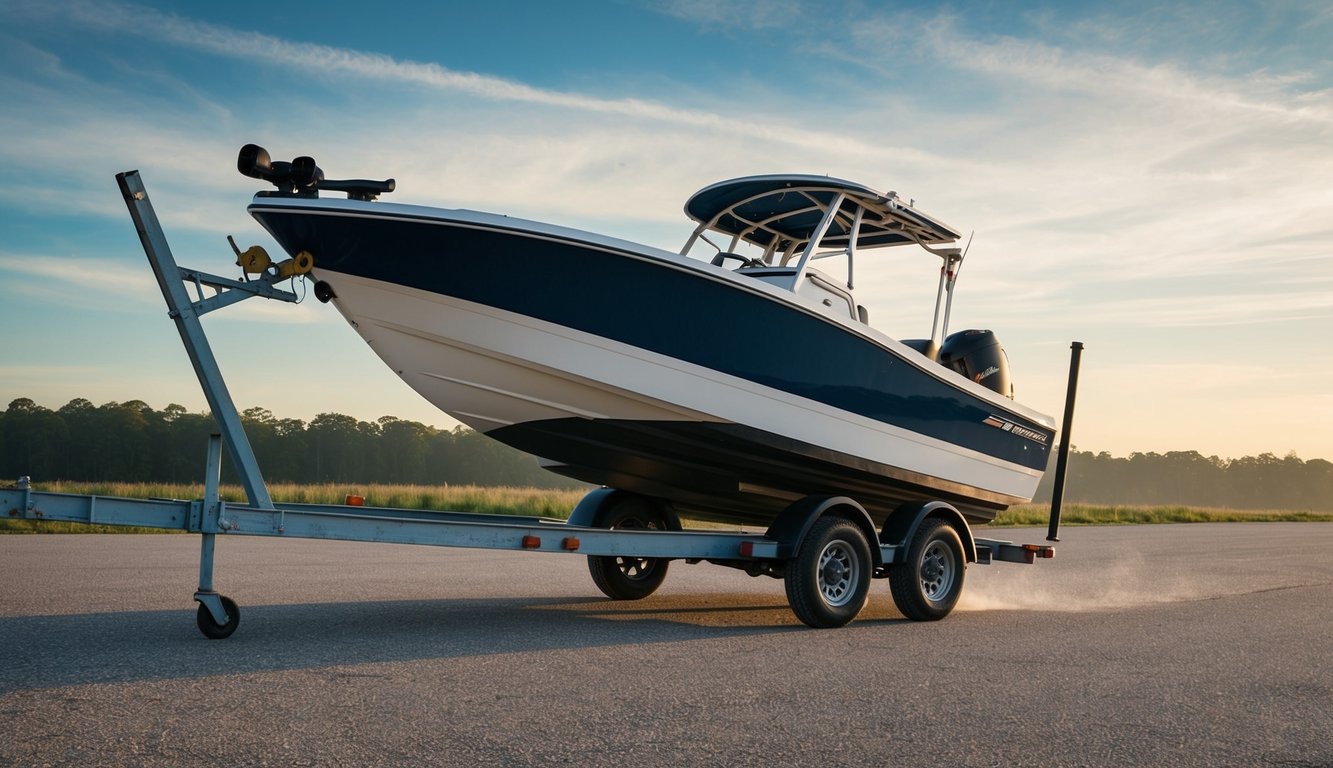
- Choosing the wrong vehicle to transport your bass boat is a common and costly mistake. Your tow vehicle needs to have enough power and the right towing capacity for your specific boat size and weight.
- Many boat owners underestimate the total weight they’ll be hauling. Remember to factor in not just the boat, but also the trailer, fuel, fishing gear, and other equipment.
- Using a vehicle with inadequate towing capacity puts extreme stress on the engine, transmission, and brakes. This can lead to potential damages to both your vehicle and boat.
- Check your vehicle’s owner manual for the maximum towing capacity. Never exceed 80% of this rating to maintain safe control, especially when dealing with wind or emergency situations.
- The wrong hitch class can also compromise your safety. Make sure your vehicle has the appropriate hitch class for your bass boat’s weight.
- When choosing container haulage for international shipping, verify the container size is appropriate for your bass boat dimensions. Inadequate container size can result in damage during transit.
- If you’re hiring a transport company, ensure they have vehicles specifically designed for bass boat transportation. Ask about their equipment before booking their services.
6. Forgetting to Check Local Regulations
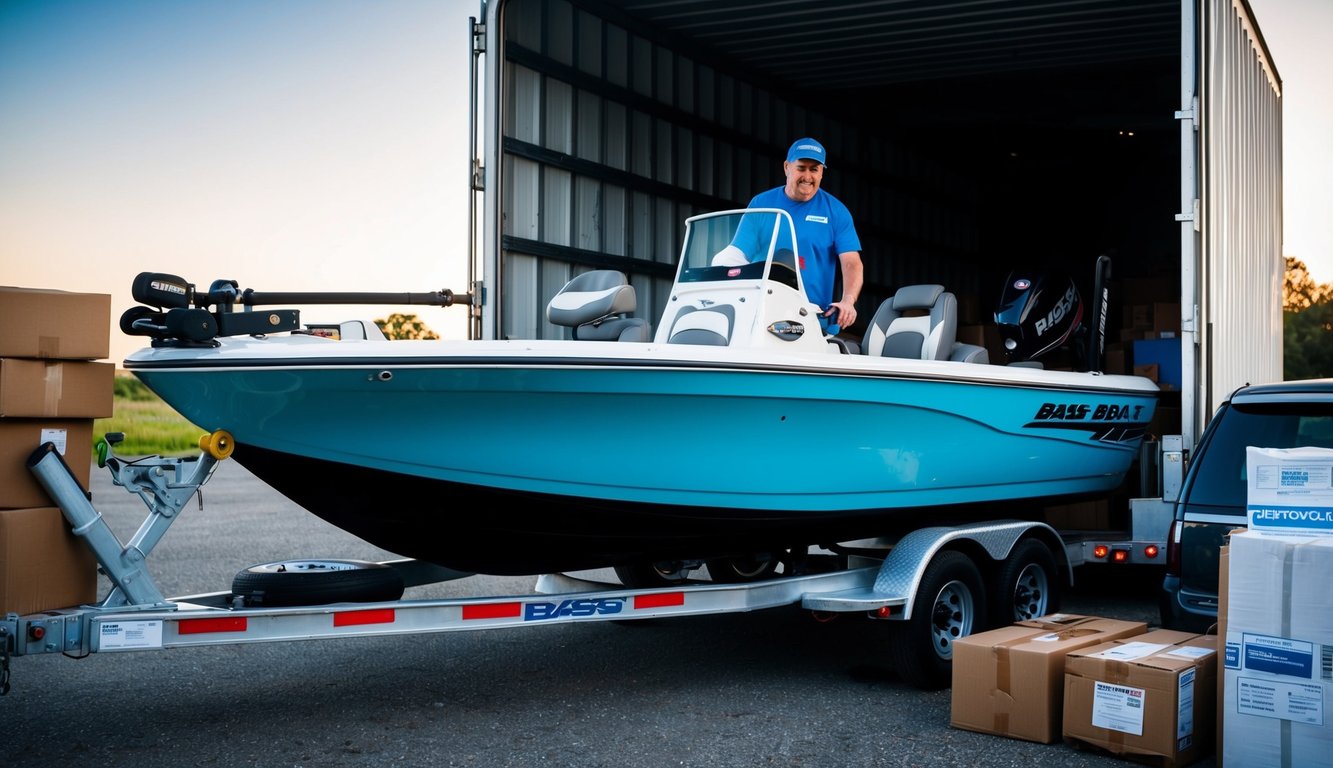
- When shipping your bass boat across different areas, many boat owners overlook local transportation regulations. Each state has its own rules about boat size, permit requirements, and travel restrictions that could affect your shipping process.
- You need to research the regulations for every state your boat will travel through. Some states require special permits for boats over certain dimensions, while others have specific travel time restrictions for oversized loads.
- Ignoring shipping regulations can lead to delays, fines, and even having your boat held at state lines. These unexpected issues can turn an exciting delivery into a stressful experience.
- Be sure to check if your route includes any low bridges, narrow roads, or weight-restricted areas. These obstacles might force your transport company to take detours, adding time and cost to your shipment.
- Remember to verify if your destination has any local regulations about boat storage or delivery. Some neighborhoods have rules against keeping boats in driveways, which could create problems upon arrival.
- Ask your transport company about their knowledge of regulations along your route. Experienced transporters will be familiar with common regulatory challenges and can help you avoid compliance problems.
7. Overloading the Trailer
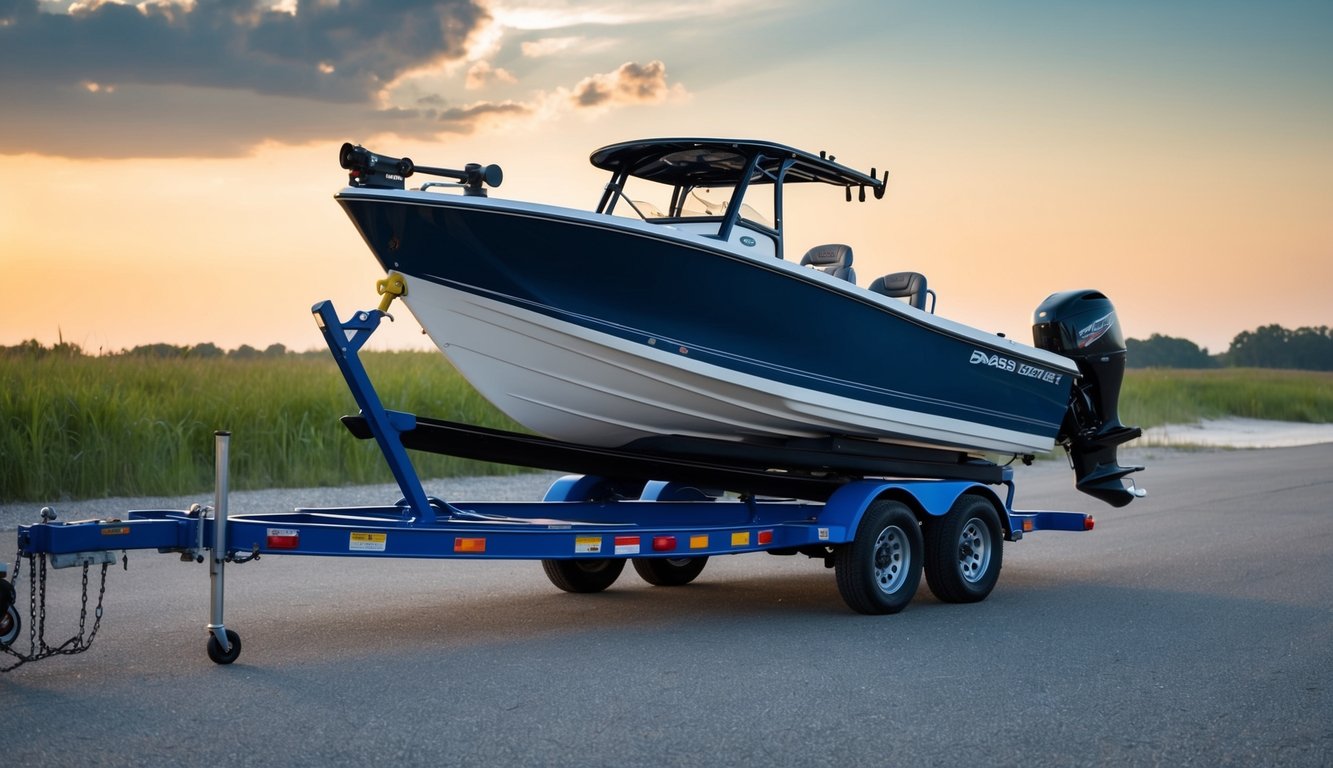
- One of the most common mistakes when shipping a bass boat is overloading the trailer. This can lead to serious safety issues on the road and damage to your equipment.
- Improper loading and weight distribution can cause trailer sway, reduce fuel efficiency, and increase wear on both your vehicle and trailer. Always check your trailer’s weight capacity before loading your boat.
- Remember that the weight limit includes everything on the trailer—not just the boat itself. Fishing gear, coolers, and other equipment add up quickly.
- Before hitting the road, make sure to distribute weight evenly across the trailer. Uneven weight distribution makes your trailer harder to control, especially at highway speeds.
- Pay attention to how your vehicle handles when pulling the loaded trailer. If it feels sluggish or the back end sags significantly, you may be exceeding safe weight limits.
- Overloading issues can catch you by surprise if you’re not careful. Take the time to weigh your fully loaded boat and trailer at a public scale if you’re unsure.
- Consider removing unnecessary items from your boat before transport. This reduces weight and makes your towing experience safer and more efficient.
8. Not Draining Excess Fuel
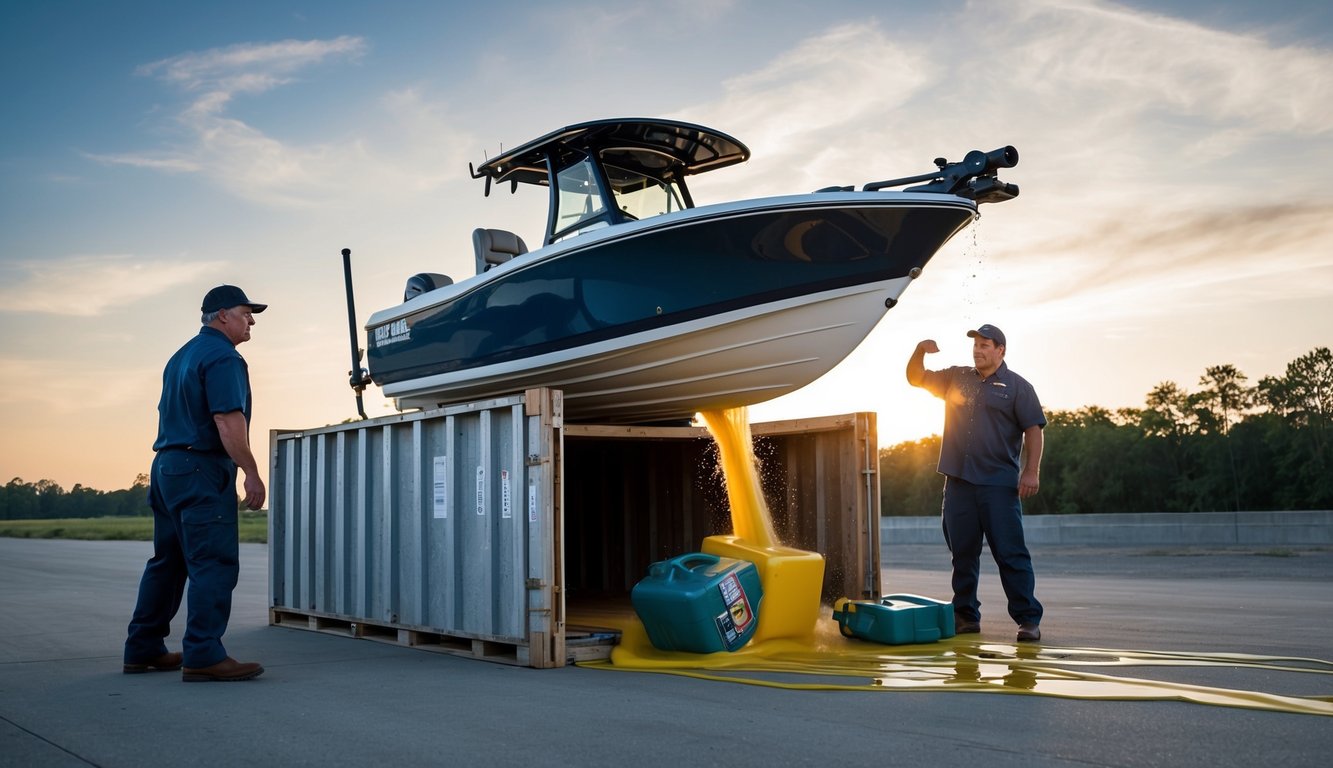
- Many boat owners overlook the importance of draining excess fuel before shipping their bass boat. Fuel adds significant weight and can become a safety hazard during transport.
- Before shipping, you should reduce your fuel tank to no more than one-quarter full. This reduces weight and minimizes the risk of spills or leaks during transit.
- If you need to remove fuel from your tank, you can use a suction pump to drain bad gas or excess fuel. For larger boats, a motorized suction pump works best.
- Another simple method is to run the boat until it uses up most of the fuel. You can then add just enough fresh fuel to reach your destination.
- Make sure fuel vents are clear before shipping. A blocked vent can cause pressure problems in your tank. If your tank isn’t accepting fuel, this could indicate a vent issue.
- Check for any fuel leaks before shipping. Even small leaks can create dangerous situations during transport.
- Remember that fuel can degrade over time. If your boat will be shipped and stored for a long period, using a fuel stabilizer is recommended.
9. Neglecting Routine Maintenance
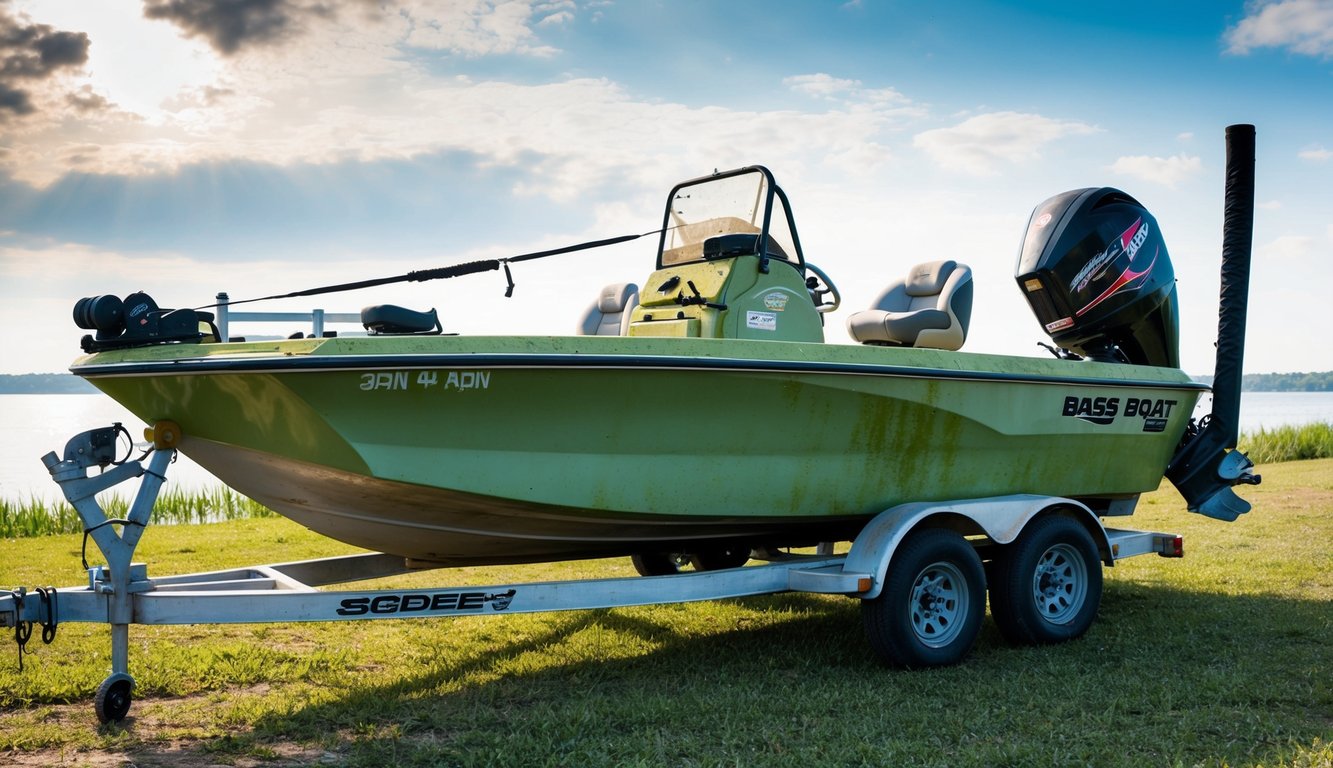
- Proper boat maintenance isn’t just for looks—it’s essential before shipping your bass boat. Many owners overlook simple upkeep tasks that can lead to serious problems during transport.
- Regular cleaning is crucial, especially after fishing in dirty or stained water. Wipe down your boat after every use, or at least every second outing. This prevents dirt and grime from damaging your boat’s finish during transit.
- Salt residue might seem harmless, but it can cause significant damage over time. Salt and water spots can corrode your boat’s exterior during long transport journeys if not properly cleaned beforehand.
- Don’t overlook your boat’s mechanical components either. Check all systems before shipping to ensure everything is in working order. This includes inspecting for loose parts that could become damaged during transport.
- Proper equipment maintenance prevents future headaches. Simple maintenance checks help you avoid discovering problems when your boat arrives at its destination.
- Remember that learning about boat maintenance is an ongoing process. Even understanding one new thing about caring for your vessel can make a significant difference in protecting your investment during shipping.
10. Failing to Document Boat Condition
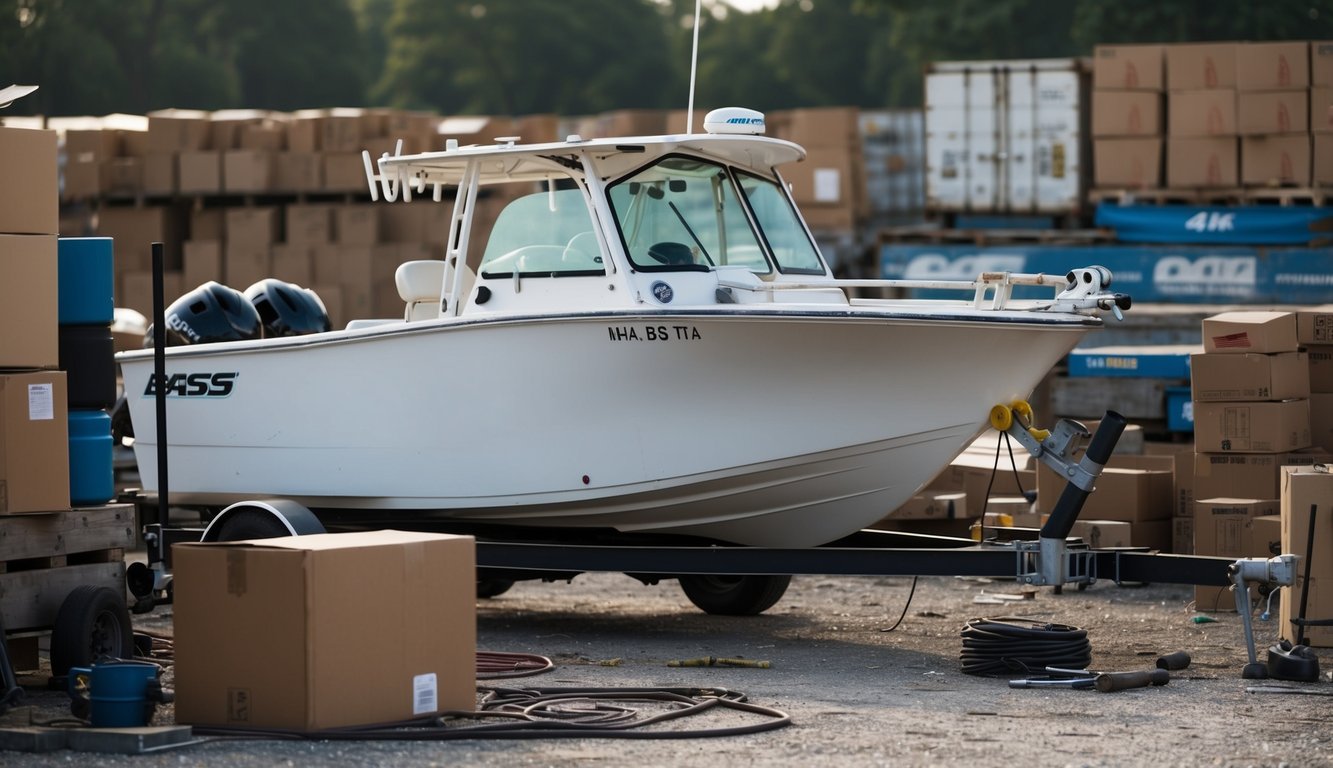
- When shipping your bass boat, one crucial step many owners overlook is documenting its condition before transport. Taking detailed photos of your boat from all angles creates important evidence of its pre-shipping state.
- Make sure to capture clear images of the hull, engines, electronics, and any existing scratches or damage. This documentation serves as your protection if disputes arise after delivery.
- You should also create a written record listing any existing issues. Note specific details about gel coat condition, trim pieces, and working status of all components.
- Proper documentation can prevent disagreements about when damage might have occurred. Without before-and-after proof, it becomes difficult to file successful claims against shipping companies.
- Consider recording a video walkthrough of your boat as well. This provides even stronger evidence of its pre-transport condition and functioning equipment.
- Remember to date all photos and videos. Store digital copies in multiple locations to ensure you can access them when needed. This small effort before shipping can save you significant headaches and potential financial loss.
